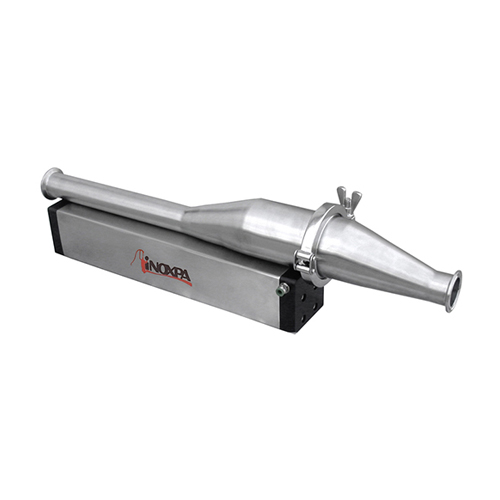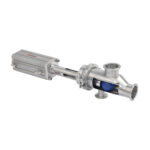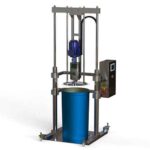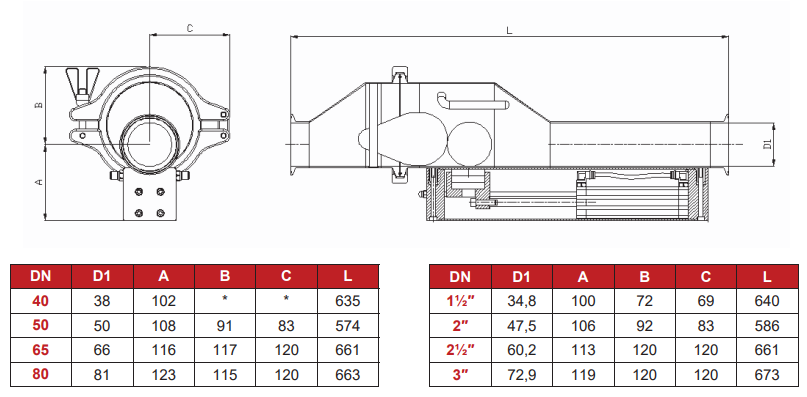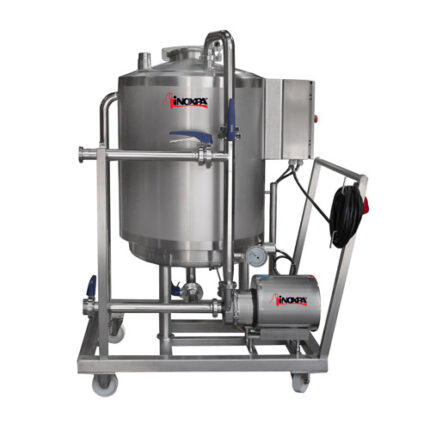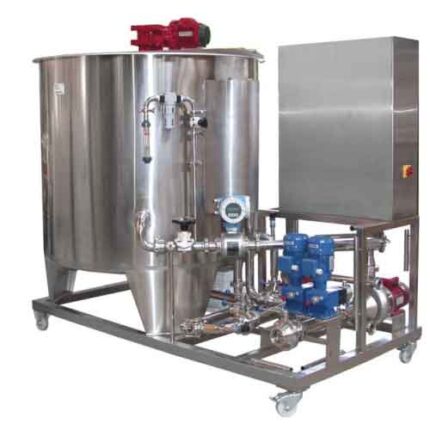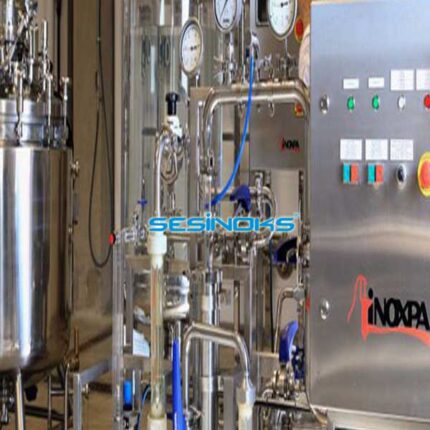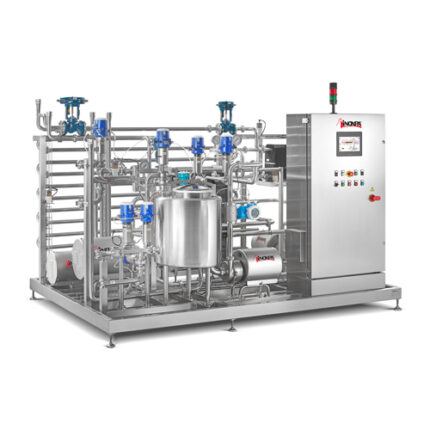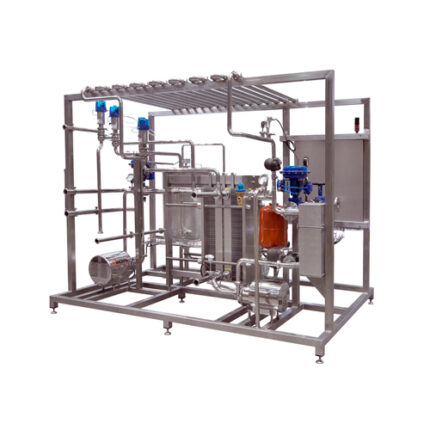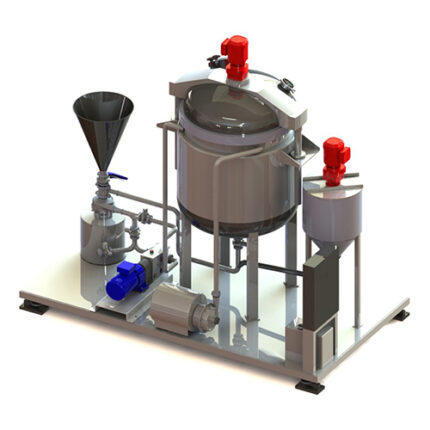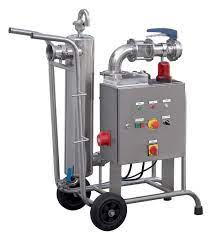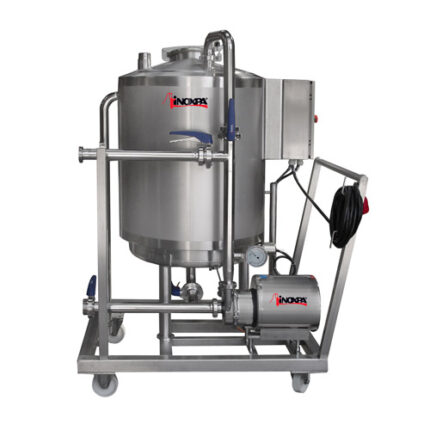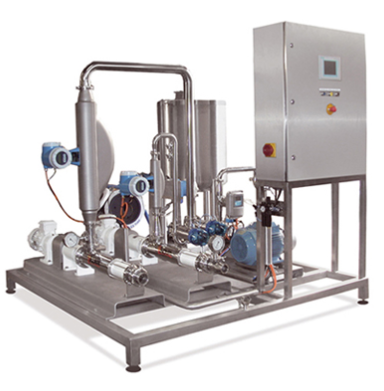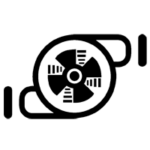Steripig Product Recovery System
The Steripig Product Recovery System is ideal for recovering any product left in a pipeline at the end of the transfer process. Because this product can be of high value, the PIG system recovers the product by removing it from the pipelines and preparing the pipeline for a CIP operation.
Another benefit is energy and water savings by reducing the amount of liquid sent to the wastewater treatment plant.
The main application of the system is viscous media.
Products processed include gels, creams, ointments, emulsions and other products of high value in the pharmaceutical or cosmetic industry.
Application
The Steripig Product Recovery System is ideal for the recovery of any product remaining in a pipeline at the end of the transfer process. As this product can be of a high value the PIG system recovers the product removing it from the pipelines and preparing the pipeline for a CIP process. Another benefit is the reduction of the fluid sent to the sewage treatment plant that results in saving energy and water.
The main application of the system is viscous media. Among the products treated there are gels, creams, ointments, emulsions and other products of high value in the pharmaceutical or cosmetic industry.
Steripig Product Recovery System Operating Principle
The STERIPIG system offers a completely hygienic product recovering solution because no component enters or leaves the installation. The sphere is positioned by external magnet. During the CIP process, when the flow rate is sufficient, the sphere gets free inside the launcher or receiver avoiding any dead leg zones between the pipeline and the sphere.
The system includes a launcher, a receiver, a PIG (a sphere), two position detectors (one for the launcher and the other for the receiver), four automatic butterfly valves and two KH three way valves.
The process starts locating the sphere in the launching position. Then the sphere is driven by a propellant (normally compressed air) down the pipeline to the receiver recovering any product left in the pipeline. When recovery is complete, the PIG is situated at the receiver and all the installation can be cleaned by CIP, the PIG can also be cleaned during the CIP routine. The CIP process is finished, the sphere is placed again into the launcher leaving the plant ready for the next production process.
Design and features
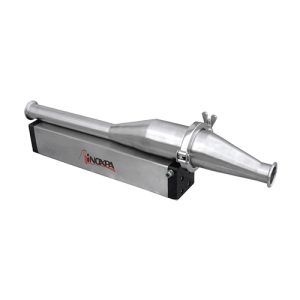 PIG can pass through 1.5D bends.
PIG can pass through 1.5D bends.- Connections: Clamp OD (standard).u
- Size ranges: From 1 ½” (DN 40) to 3″ (DN 80).
- Hygienic design according to the EHEDG specifications.
Materials
- Metal parts in contact with the product: AISI 316L
- Other metal parts: AISI 304
- PIG: Silicone
- Gasket: EPDM according to FDA 177.2600
- Internal surface finish: Ra ≤ 0,5 µm
Options
- Connections: DIN, RJT, SMS, etc.
- Spheres: EPDM and Viton®.
- Gaskets: Silicone, PTFE, Viton®.
- Various levels of automation.
- Control panel.
Technical specifications
Available sizes: DN 40 – DN 80 DN 1 ½” – DN 3″
Working temperature*: -10 ºC to +120 ºC (EPDM) 14 ºF to 248 ºF
+140 ºC (SIP, max. 30 min) 284 ºF
Max.working pressure: 10 bar 145 PSI
Compressed air pressure: 5-7 bar 72-101 PSI
Indicators, switches and solenoids: 24 V DC
*Maximum temperature depending on the sphere material, gasket material and type of application.
Benefits / Advantages
- Non dead legs.
- Production downtime reduced.
- Raw material loss reduced.
- Recovery of up to 98% of the product.
- Effluent reduced.
- CIP cleaning time, water consumption and quantity of chemical products reduced.
- Non intrusive, totally sealed system during the production process.
Product Recovery System
The Product Recovery System plays a critical role in cleaning process lines and minimizing product losses at the same time. The process of cleaning process lines is important to meet hygiene standards, but product losses that occur during this process cannot be ignored. The product recovery system increases process efficiency by meeting these two important requirements together.
This system enables the recovery of valuable end product in process lines. In this way, losses occurring during production are minimized and product waste is prevented. Additionally, the product recovery system significantly reduces the process water consumption required to clean the process lines. This provides both a more environmentally sustainable production process and savings in operating costs.
The product recovery system can have various levels of automation. Fully automatic systems enable processes to be carried out largely automatically, minimizing human intervention while increasing operating efficiency. Semi-automatic or manual systems may be more suitable for smaller businesses or certain products.
As a result, the product recovery system ensures the cleaning of process lines by meeting hygienic standards, while minimizing product losses and increasing operating efficiency. This system plays an important role in industrial production processes and contributes to an environmentally and economically sustainable production practice.
Related products
CIP Manual Mobile System
Abh In-Line Flotation Unit
Winebrane – Dealcoholisation Technology
Winebrane Dealcoholisation Technology is a system for accurately managing divided gas concentrations in wine. The most common applications are de-carbonation, de-oxygenation, carbonation and adjustment of CO2 in white, red and rosé wines. The system is installed before the bottling stage to adjust the gas concentration of wine before its storage or bottling process.
Pasteuriser
Pasteuriser (HTST) is designed for the thermal treatment of milk and dairy products as well as other food products as soft drinks and juices. The process destroys pathogenic microorganisms by heating the product to a moderately high temperature for a brief period. Other working parameters to be consulted.
